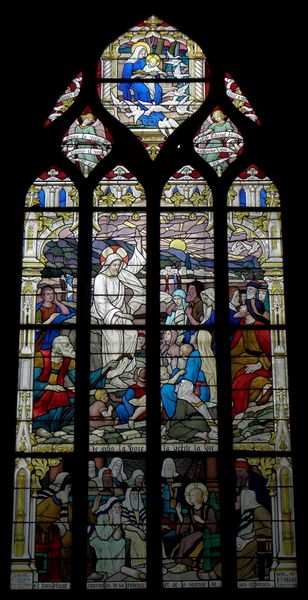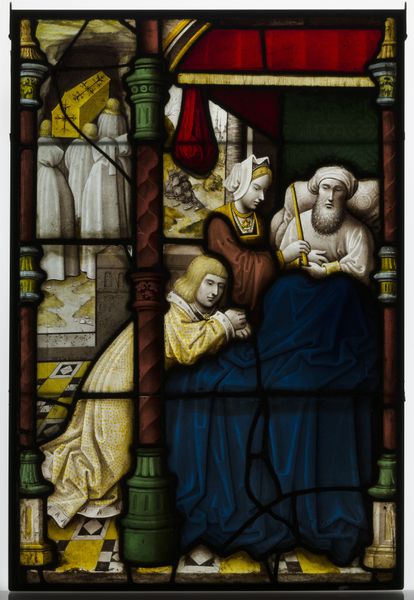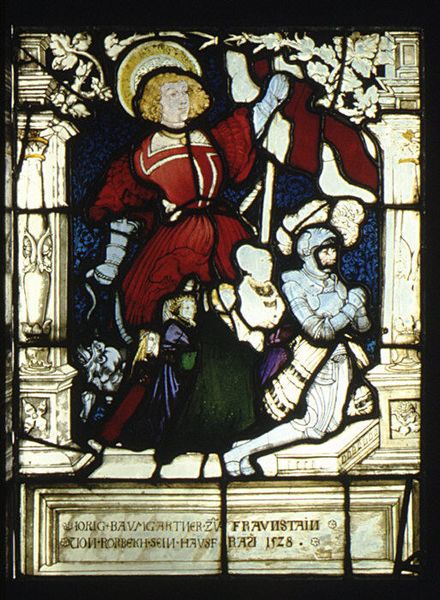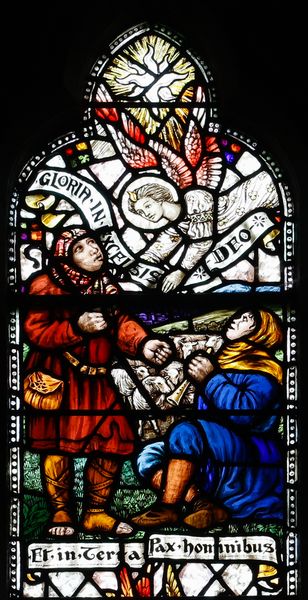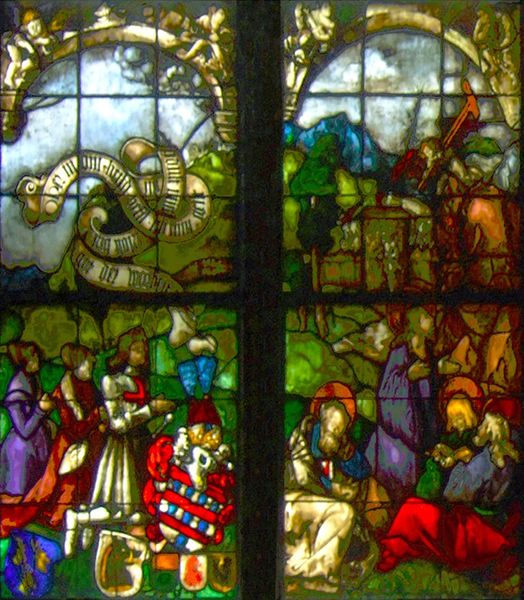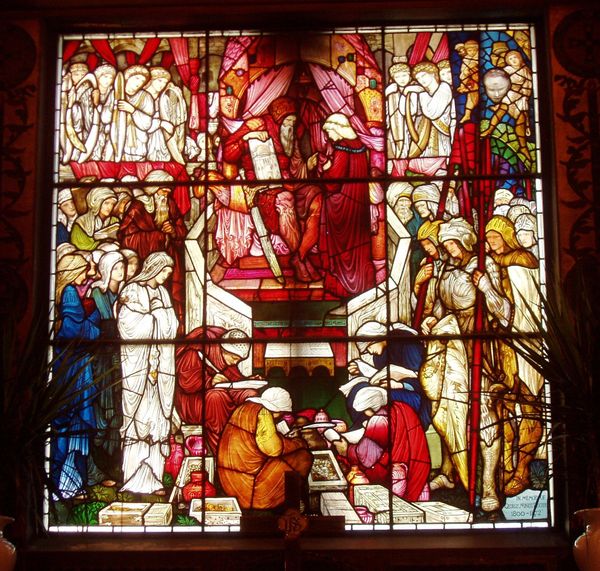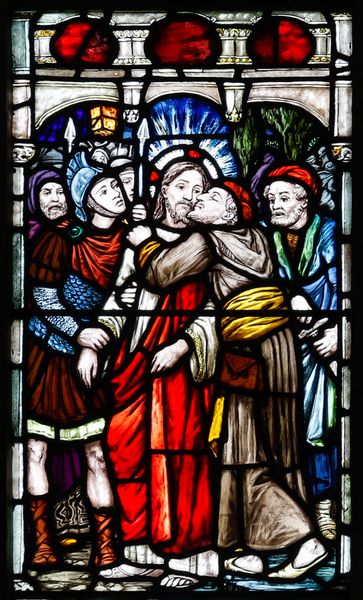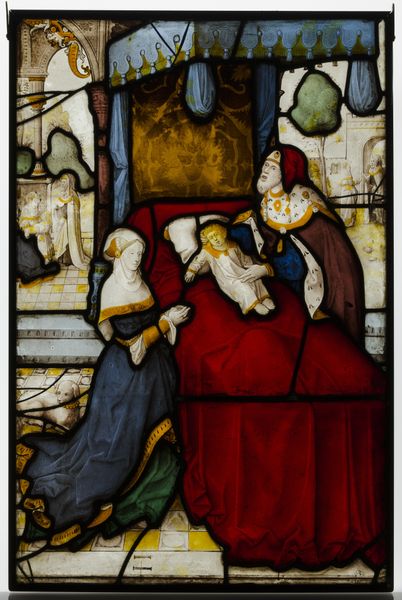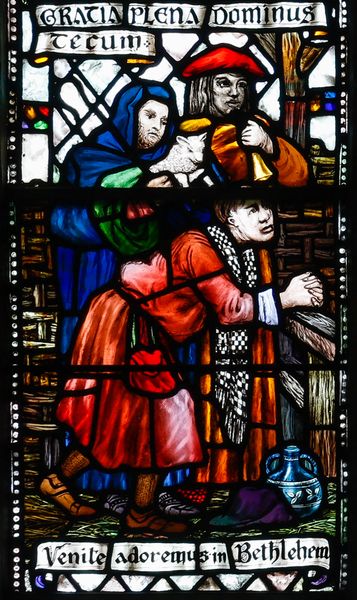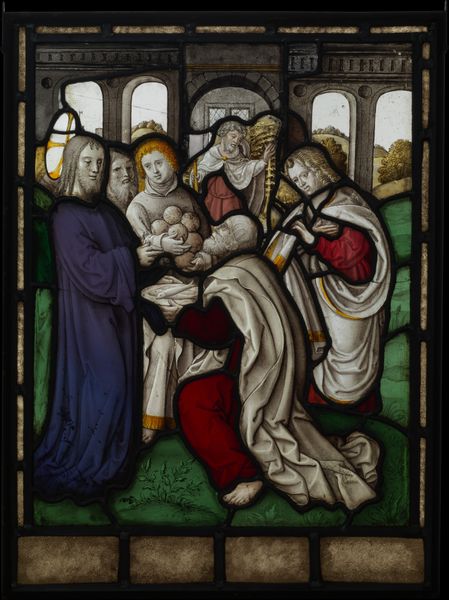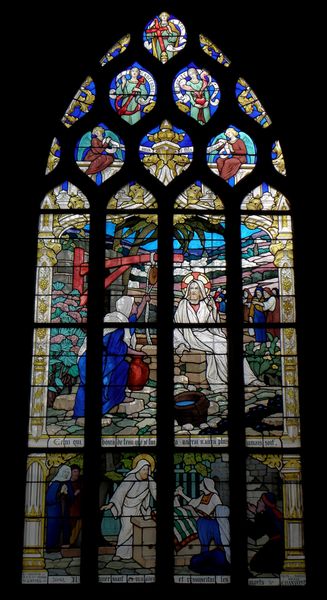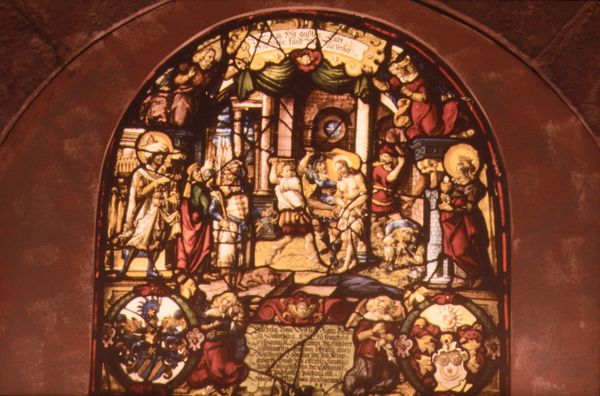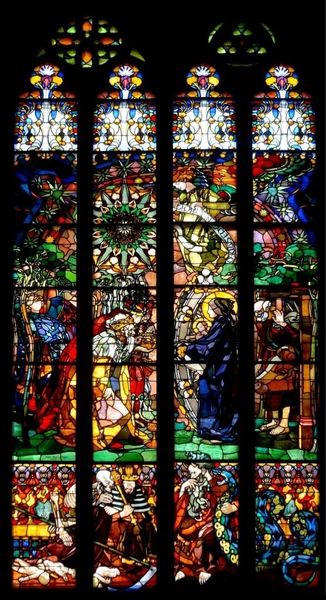
The Disciples in the Upper Room (?) 1530 - 1555
0:00
0:00
glass
#
medieval
#
stain glass
#
figuration
#
glass
#
men
#
decorative-art
#
stained glass
Dimensions: Overall: 81 1/2 × 66 in. (207 × 167.6 cm)
Copyright: Public Domain
Pieter Coecke van Aelst’s ‘The Disciples in the Upper Room (?)’ is an impressive stained-glass panel. Each section was carefully crafted from pieces of colored glass held together by lead cames. Glassmaking was a sophisticated process. Raw materials like silica sand and soda ash were melted at high temperatures, then metallic oxides added for color. The molten glass was then shaped, cooled, and cut into the desired forms. The lines of lead holding the composition together give definition to the disciples’ robes. The creation of stained glass was a highly skilled, labor-intensive endeavor. In the medieval and Renaissance periods, glassmakers held a unique position as both artisans and artists. They were essential to the construction and decoration of churches and cathedrals. Looking closely at this panel, you can see how the properties of glass – its transparency and capacity to transmit light – are critical to the artwork's narrative impact. It transforms the light that passes through it, embodying its subject matter. By emphasizing the importance of material, making, and context, we can understand the full meaning of this artwork.
Comments
No comments
Be the first to comment and join the conversation on the ultimate creative platform.
